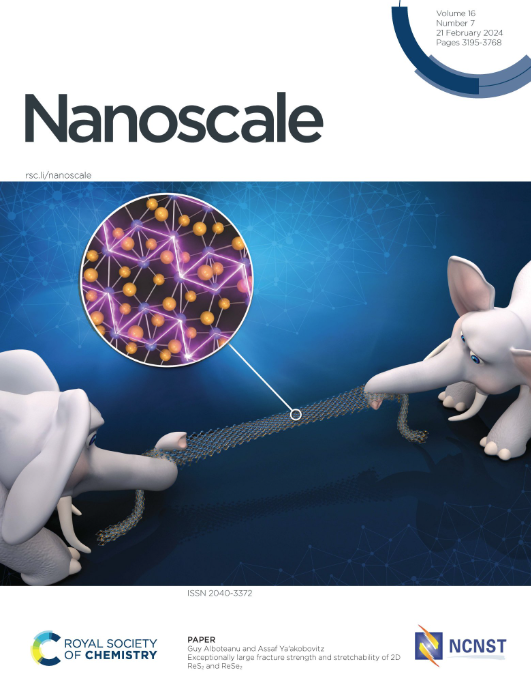Effects of Néel and Brownian relaxations on dynamic magnetization empirically characterized in single-core and multicore structures of magnetic nanoparticles
IF 5.8
3区 材料科学
Q1 CHEMISTRY, MULTIDISCIPLINARY
引用次数: 0
Abstract
This study takes a novel approach to understanding the diagnostic and therapeutic efficacy for cancer theranostics using magnetic nanoparticles. We focus on parameters influencing dynamic magnetization response, such as particle core size and magnetic anisotropy. Our experimental investigation of the relationship between magnetic relaxation and these particle parameters provides fresh insights for developing biomedical applications. The magnetic relaxation time was estimated from the magnetic relaxation process measured by applying a pulsed magnetic field over a wide time range of 20 ns–200 ms. Magnetic nanoparticles of the single-core and multicore structures in viscous fluid and solid conditions were measured to evaluate the Néel and Brownian relaxations, respectively, associated with the magnetization and physical particle rotations. We observed distinct magnetization response associated with the complex magnetic relaxation mechanisms, which challengs concept to describe using the conventional theory of the effective relaxation time. Moreover, we clarified the relationship between the effective magnetic anisotropy energy and attempt time controling the magnetization dynamics dependent on the particle structures. Our novel measurement technique and investigation of the magnetic relaxation time significantly optimize the material design and determine magnetic field conditions for biomedical applications, particularly in cancer theranostics using magnetic nanoparticles.nsamel和brown弛豫对单核和多核磁性纳米颗粒动态磁化特性的影响
本研究采用一种新方法来了解利用磁性纳米粒子进行癌症治疗的诊断和疗效。我们重点关注影响动态磁化响应的参数,如颗粒磁芯尺寸和磁各向异性。我们对磁弛豫与这些颗粒参数之间关系的实验研究为开发生物医学应用提供了新的见解。磁弛豫时间是通过在 20 毫微秒至 200 毫秒的宽时间范围内施加脉冲磁场测量的磁弛豫过程估算出来的。在粘性流体和固体条件下测量了单核和多核结构的磁性纳米粒子,分别评估了与磁化和物理粒子旋转相关的奈尔弛豫和布朗弛豫。我们观察到了与复杂的磁弛豫机制相关的不同磁化响应,这对使用传统的有效弛豫时间理论来描述这一概念提出了挑战。此外,我们还阐明了有效磁各向异性能与控制磁化动态的尝试时间之间的关系,而这取决于粒子结构。我们新颖的磁弛豫时间测量技术和研究极大地优化了材料设计,并确定了生物医学应用的磁场条件,特别是使用磁性纳米粒子的癌症治疗学。
本文章由计算机程序翻译,如有差异,请以英文原文为准。
求助全文
约1分钟内获得全文
求助全文
来源期刊

Nanoscale
CHEMISTRY, MULTIDISCIPLINARY-NANOSCIENCE & NANOTECHNOLOGY
CiteScore
12.10
自引率
3.00%
发文量
1628
审稿时长
1.6 months
期刊介绍:
Nanoscale is a high-impact international journal, publishing high-quality research across nanoscience and nanotechnology. Nanoscale publishes a full mix of research articles on experimental and theoretical work, including reviews, communications, and full papers.Highly interdisciplinary, this journal appeals to scientists, researchers and professionals interested in nanoscience and nanotechnology, quantum materials and quantum technology, including the areas of physics, chemistry, biology, medicine, materials, energy/environment, information technology, detection science, healthcare and drug discovery, and electronics.
 求助内容:
求助内容: 应助结果提醒方式:
应助结果提醒方式:


